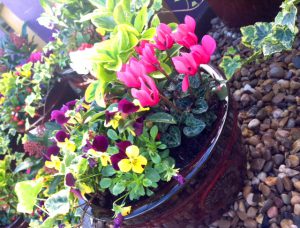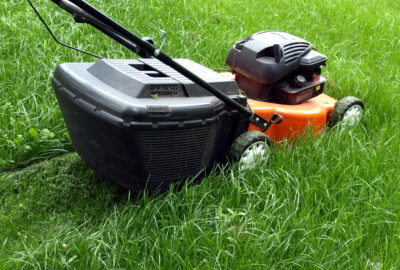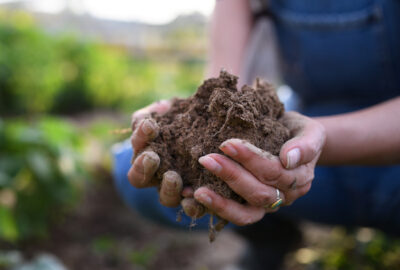How To
Container Garden
If you thought creating a container for your garden would be hard – think again. Here are our top tips for creating an amazing container for your garden, no matter the size and how to care for it. From what to use, what compost and what to plant.
What can I use?
The simplest answer to this question is anything, from an old colander to an old tin bath. There are a few requirements for any container though, regardless of the actual item used.
Firstly it must be able to hold the compost in place without a risk of it spilling out or the container collapsing. It must also be the right size for the plant you intend to use. It should be no bigger than twice the size of the root ball of the plant that you intend to use.
The root ball is the entire root system of the plant and the compost in which it has been grown. If necessary, you may need to pot the plant on again in order for the plant to reach its full potential.
But the most important aspect of your container is drainage. It must have adequate drainage for the plant that you intend to use. Most outdoor containers will already have drainage holes in them. If the item you intend to use doesn’t, then you will have to drill holes into it before you plant it up. This is very important as the vast majority of plants will die if they have too much water sitting around their roots.


What compost should I use?
The answer to this question very much lies in the type of plant that you are going to use in your container or containers. For bedding plants (i.e. plants that you will plant for a period of the year and remove to plant up again) any good multi-purpose compost will be fine.
If you intend to plant trees, shrubs or perennials (a plant that comes back year after year), then a John Innes No. 3 compost, or a multi-purpose compost with added John Innes, is probably best.
The main exception to this is any of the acid loving plants, such as Heathers, Azaleas, Rhododendrons, Camellias, Pieris and Skimmia. For these plants you should use a good quality ericaceous compost.
Regardless of the compost used, you should always use fresh compost each time you are replanting a container. The old compost will have lost all of the feed that was put into it and the structure will have started to break down too. But more importantly, it may be contaminated with pests and/or diseases which could affect your new plants.
How often should I water?
The only answer that can be given to this question is as and when required. It will very much depend on the type of plant, compost, size and type of container, position, time of year and weather conditions. All these factors will determine how often you should water your container.
The most important points to bear in mind though, are as follows:
- The wind is much worse than the sun for drying plants out. Bear this in mind during the winter. If there is a mild & windy spell of weather during winter, this has the potential to dry containers out, particularly if planted with evergreen shrubs.
- Rain is not enough. Very often people will think that the rain is enough to water their containers. Unfortunately this is not the case, especially if the weather is windy or the container is in a sheltered position against a fence or wall where the rain doesn’t really reach.


How often should I feed?
Another important point to note is that plants in containers are entirely reliant upon you for feed, so it is important that you establish a feeding routine. Plants, whether in containers or not, should only be fed during the growing season between spring and autumn. During colder weather in the winter, the plant will not take up the feed even if you were to use it.
The compost that you use to plant up your container will have a certain amount of feed in it that will last up to one growing season. However, if you are growing bedding plants, it is always wise to use a liquid feed once a week when watering to get the best from your plants.
For trees, shrubs and perennials it is better to use a granular feed such as Growmore. Sprinkle this onto the surface of the compost and it will gradually be taken down to the roots of your plant when you water it.
There are also specific feeds for acid loving plants often marketed as feed for Rhododendrons, Camellias and Azaleas. There are also slow release or controlled release feeds available. These are mixed into the compost when you plant up your containers and will last up to one growing season, the feed being released bit by bit every time your water your containers.
What Should I Plant?
The answer to this is simple: any plant can be planted in a container, as long as the container you are using is appropriate for the plant that you have.
Speak to our team about what container you have and what plants your like.
You can also watch our how to create a container video HERE

Comments are closed








